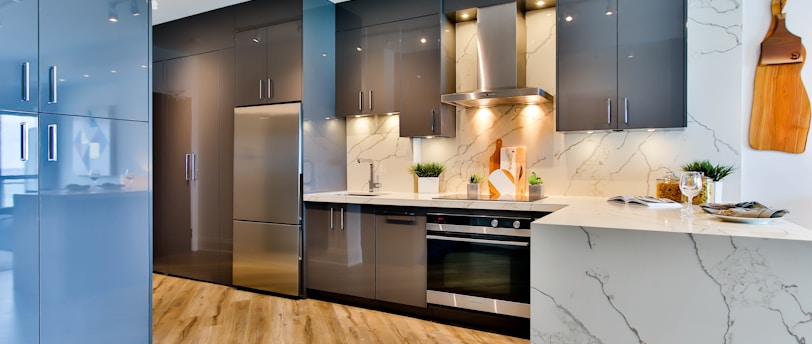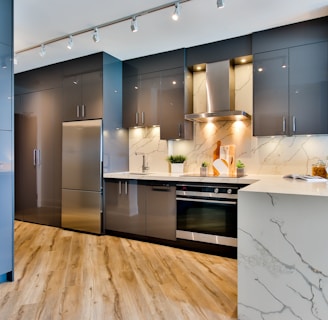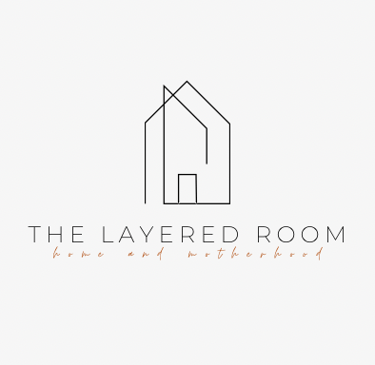Stylish & Functional Kitchen Design Tips for Everyday Living
Your kitchen isn’t just for cooking—it’s where mornings begin, where friends gather, and where memories are made over everything from pancakes to pasta. That’s why a well-designed kitchen should strike a perfect balance between style and function.
4/25/20254 min read


If you’re planning a kitchen update (or just dreaming of one), focusing on a few key elements can dramatically improve both the beauty and practicality of the space. Instead of overwhelming you with a long list, let’s go deep into three essential tips that will make your kitchen work better—and look amazing—every single day.
1. Rethink Your Layout for Seamless Functionality
Before you choose colors or backsplashes, focus on what matters most: flow.
The layout is the backbone of your kitchen. A poorly planned layout can make even the most beautiful kitchen frustrating to use. On the other hand, a thoughtful layout can make cooking feel effortless—even enjoyable.
Use the Kitchen Work Triangle.
The work triangle is a classic design principle that connects the stove, refrigerator, and sink—the three main work zones. Ideally, these points form a triangle with easy access and minimal traffic disruption. This setup reduces extra steps and improves efficiency.
Tailor the Layout to Your Lifestyle.
Think about how you use your kitchen. Do you prep meals with your partner or kids? Do you host often? Your layout should reflect that.
Solo cooks: A U-shaped or L-shaped layout keeps everything within reach.
Families and entertainers: Islands or peninsulas offer seating, extra prep space, and clear zones for guests to gather without crowding the cook.
Small kitchens: A galley layout can maximize efficiency in tighter spaces by keeping things linear and organized.
Pro Tip: Leave Space to Move.
Even in compact kitchens, you need at least 42 inches between counters or appliances for comfortable movement, especially in multi-cook households.
A beautiful kitchen that’s hard to navigate will never feel right. Nail the layout first—it sets the stage for everything else.
2. Maximize Storage Without Sacrificing Style
Let’s face it: clutter kills style. A functional kitchen needs to be organized and efficient, but that doesn’t mean you have to settle for bulky cabinets or sterile designs.
The secret? Storage solutions that are smart, subtle, and stylish.
Go Vertical.
Your walls are valuable real estate. Install open shelving or ceiling-height cabinets to store everything from plates to pantry items. Open shelves can be both decorative and functional—display your prettiest dishware, cookbooks, or even trailing plants.
Upgrade Cabinet Interiors.
Inside your cabinets is where the real magic can happen:
Pull-out pantry drawers keep dry goods visible and easy to reach.
Lazy Susans or corner carousels prevent wasted space.
Drawer dividers keep utensils and tools sorted by function.
Vertical tray dividers are perfect for baking sheets, cutting boards, and platters.
Don’t underestimate how good it feels to open a drawer and see everything perfectly in its place.
Hide the Everyday, Highlight the Beautiful.
You don’t need everything on display. Hide clutter—like blenders, coffee makers, or air fryers—in appliance garages or lower cabinets, and reserve your counters for pieces that add charm or serve daily needs.
For example: a gorgeous ceramic fruit bowl or a vintage wooden cutting board can serve as decor and functional tools.
By blending concealed storage with thoughtful displays, your kitchen stays clean, efficient, and full of personality.
3. Layer Your Lighting for Mood and Function
Lighting is often treated as an afterthought, but in kitchen design, it’s everything.
Good lighting isn’t just about seeing what you’re chopping—it transforms the space from strictly utilitarian to truly inviting. The key is layering different types of lighting for different needs and times of day.
Three Layers of Kitchen Lighting:
Ambient Lighting (General Light):
This is your overall light source—typically ceiling fixtures or recessed lights. It should fill the room with a warm, even glow. Soft, warm bulbs make your kitchen feel cozy, especially in the evening.Task Lighting (Focused Light):
This is where function meets necessity. Install under-cabinet lighting to illuminate countertops while prepping food. You can also use focused pendant lights over your island or sink to add both light and style.Accent Lighting (Atmosphere & Style):
Add flair with toe-kick lighting, cabinet uplighting, or statement fixtures like globe pendants or lantern-style chandeliers. Accent lighting helps your kitchen feel layered, thoughtful, and alive—even when you're not cooking.
Bonus Tip: Use Dimmers
Dimmable lighting gives you the power to shift the mood. Bright for meal prep, softer for late-night snacks or entertaining. It’s one of the most affordable ways to elevate your kitchen’s ambiance.
Whether you're boiling pasta or sipping wine with friends, your lighting should work with you—not against you.
Final Thoughts: Simple, Stylish, and Smart
A beautiful kitchen that doesn’t work well can quickly become a source of daily frustration. But the opposite is also true: a kitchen that’s functional and stylish becomes a joy to use, a place you’ll want to spend more time in.
By focusing on just these three areas:
Smart, flow-friendly layout
Storage that’s both clever and attractive
Layered lighting for both work and mood
…you’ll create a kitchen that isn’t just pretty for Pinterest—it’s perfect for everyday living.








Inspiration
Explore decor ideas for every room in home.
© 2025. All rights reserved.
Some of the links on this website are affiliate links. This means that if you click on a link and make a purchase, I may earn a small commission at no additional cost to you.
I only recommend products and services that I genuinely love, use, or believe will add value to my readers. This helps support the blog and allows me to continue creating helpful content—thank you for your support!
As an Amazon Associate, I earn from qualifying purchases.

